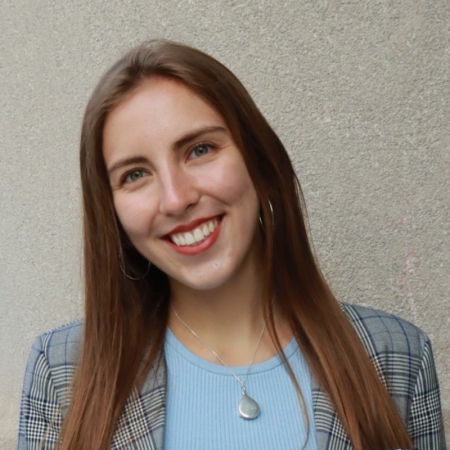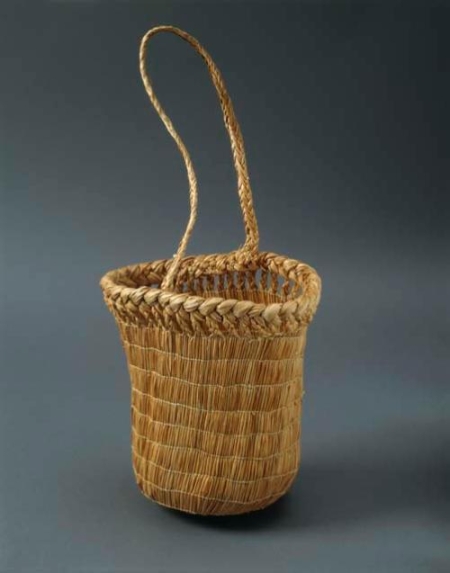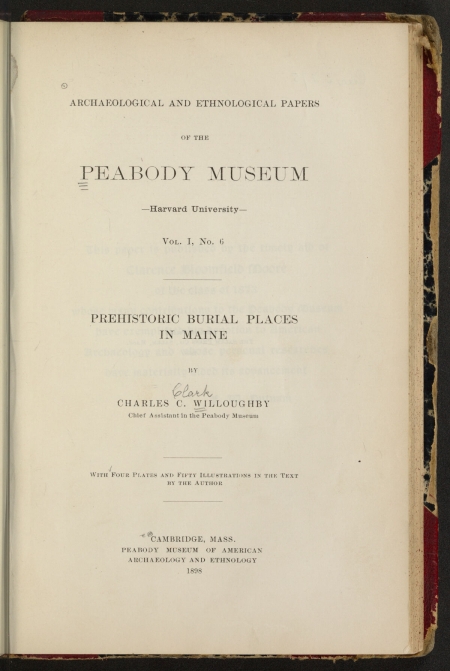Library Communications Intern Tess Kelley '23 details how she unexpectedly came to use library materials in her thesis.
In archaeology, my concentration, our main resources are things: pottery, bricks, bone. Archaeologists typically concern themselves with humanity’s physical record, not its written record. If you had told me when I chose this concentration that I’d be doing thesis research in Houghton Library’s reading room, a box of 130-year-old documents sitting before me, I never would have believed you.

But that’s exactly what happened. Ten months ago, I was a rising senior at the College in the preliminary stages of the thesis process, planning to research and write the longest paper I had ever completed. As an archaeology concentrator, I had chosen to conduct research on artifacts housed at Harvard’s Peabody Museum of Archaeology and Ethnology. My thesis would focus on American collectors who donated artifacts to the Peabody originally belonging to the Ainu, an Indigenous minority group from Japan. I’d look specifically at how these collectors made subjective decisions, based on their own biases and experiences, about what objects had “value.”
With a keen eye and a lot of patience, there is much you can learn from an object alone, as any archaeologist will tell you. At the Peabody, I looked over artifact after artifact, assessing each one’s shape, markings, and construction. I was able to determine if an object had actually been used or it was created as a tourist souvenir, or if two artifacts were created in the same community before they were purchased by an American collector.

As much as I was learning, though, I soon realized I needed to get inside the mind of the collectors in a more direct way. To be able to assess how they made value judgments, I would need to compare the objects a given collector had donated with their life, career, and beliefs. I could not do this relying on the museum’s collections alone.
For that information, I needed to look to library archives. Since many of the collectors I was researching were associated with Harvard at some point in their careers, this phase of my research brought me to Houghton Library, Harvard’s home for rare books and manuscripts. I had never done in-person archival research before, and when my first search turned up hundreds of documents, I definitely felt intimidated.
Thankfully, I decided to email one of Houghton’s librarians. Even though she was not a specialist in Japan or the Ainu, she was still able to help me streamline the process of determining which documents I’d need to view and advise me on selecting keywords to sift through this staggering amount of information.

With her tips in mind, I completed my first reading room request on HOLLIS and arrived at the library two days later, my first box of papers sitting on the table in front of me. To my surprise, I could actually touch these documents! (When working with artifacts, it is standard to wear gloves). They ranged from letters and field notes to lecture drafts and photographs. I hadn’t expected such a wide variety of documents available for my use; this diversity of sources gave me a fuller picture of each collector and helped me understand their professional versus personal lives. While the amount of material felt daunting at first, I quickly came to view it as an advantage instead.
I returned to Houghton day after day, working my way through the many boxes of documents. I could see exactly where one collector had made hand-written edits to a speech or pristinely preserved an important letter. Through the archives, these long-dead men who led lives very different from my own began to feel more human. They made jokes with their friends, asked for updates on family members, and sent well-wishes to colleagues oceans away. Instead of names in an archive, they felt like real people.
Houghton’s materials were ultimately a great addition to my study of the Ainu artifacts. The deep insight I gained into the lives and beliefs of Peabody collectors strengthened the central idea of my thesis: that their decisions to collect (or not collect) certain Ainu objects were subjective, influenced by their opinions of Indigenous cultures like the Ainu, their role in processes of colonialism, and their personal curiosity.
And my thesis is just one demonstration of the potential for Harvard Library’s resources to support a range of academic paths, even when their relevance might not seem obvious at first. Combining archaeological data with the written record was not so daunting after all.